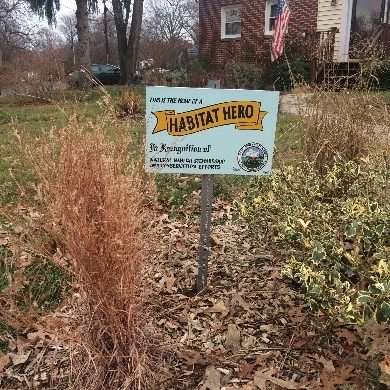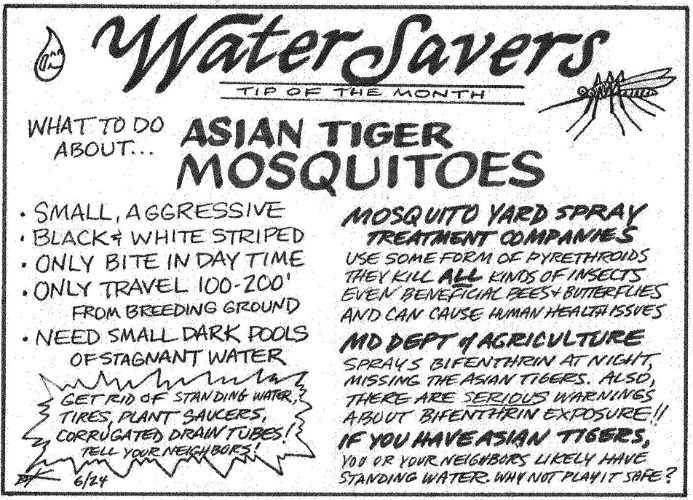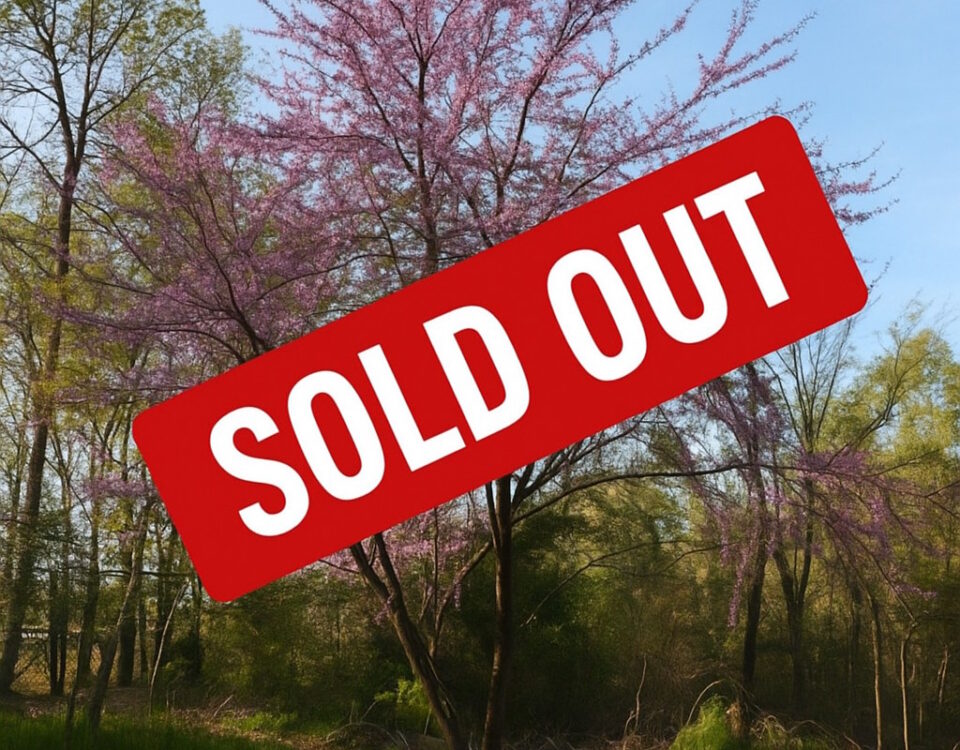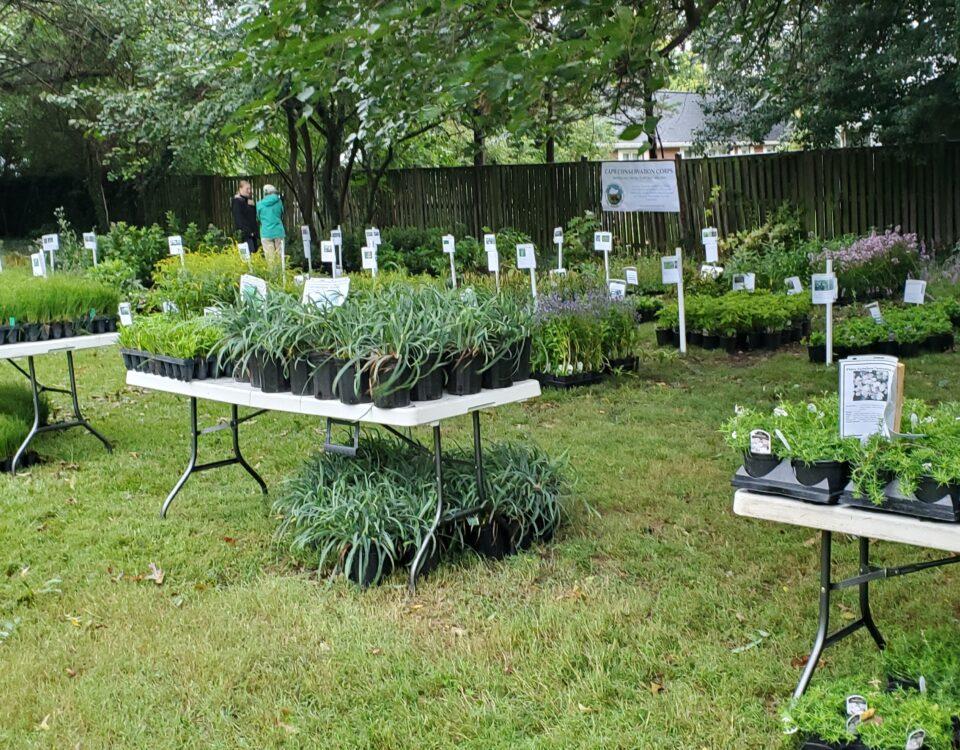Keeping the Fall Chores Away
October 9, 2019
Habitat Hero – December 2019
December 20, 2019By: Stacey Wildberger
As residents of Cape St Claire we are privileged to live in a community with water access to our beautiful Magothy River and easy access to the Chesapeake Bay. I also feel fortunate that so many of our residents are conscious stewards of their land and the community open spaces. By being a good steward we are contributing to the health of our waterways. The volunteers of Cape Conservation Corps’ mission is to “ignite community pride in our native landscape through projects that promote stewardship, create healthy natural spaces and champion swimmable, fishable waterways”. We do this through a variety of restoration projects by removing invasive plants and replacing them with native plants, as well as projects to eliminate destructive storm water runoff and erosion from our properties. I talk about the importance of using natives, replacing invasive or exotic plants and leaving your yard “messy” to create habitat. There are many other ways we can help keep our waterways clean and safe for wildlife and our recreational pleasure. Let’s take a look at several things we can do in our yards and community to promote the health of our waterways
The fall leaves are beautiful to the eye and an important part of creating habitat and adding nutrients to your lawn and garden but they can cause issues in our waterways. They can become a pollutant by causing an increase in nitrogen, phosphorous and sediment levels in the Magothy and the Bay, promoting algae growth and leading to dead zones killing aquatic life. CCC recently partnered with Town Manager, Ryan Anderson on his Capstone Project to become a Watershed Steward. His mission was to clear leaf litter from several of the main roads of Cape St Claire. The project covered 1.6 miles of streets in CSC, in which volunteers removed leaves and debris from roadside curbs, storm water drains and storm water conveyance systems. Ryan’s hope is that it will inspire all residents to clean out the drains and storm water areas in front of their own homes to have a larger impact. Another important reminder about those storm water drains is that they do not lead to a waste water treatment plant but run directly to our water ways so please do not dump anything into the storm drains. Motor oil, batteries, paint, herbicides, insecticides, swimming pool chemicals and other household hazardous materials should be taken to the landfill for proper disposal.
Pet waste is also a contributor to storm water pollution. Picking up after your pets also leads to cleaner waterways: rainwater washes feces into the local waterway leading to an unbalanced nutrient load, and also parasites and bacteria, leading to unhealthy water. Cleaning up after our pets is as simple as bringing a baggie on walks or patrolling the yard every couple of days—especially if you know a rain storm is nearby.
You can also help reduce storm water runoff from your property by disconnecting your downspouts and redirecting them. Most of our downspouts (mine included) drain into the ground or across paved surfaces. By disconnecting and redirecting to them to the lawn, a garden or a rain barrel you can reduce the volume of runoff and decrease erosion as well as keep pollutants that may have collected on those paved surfaces from being carried into the drains and ultimately to the water. For directions on how to disconnect and redirect your down spouts visit http://www.stormwater.allianceforthebay.org/take-action/installations/downspout-disconnect
Speaking of rain barrels they can be another great way to divert storm water and retain it on your property. A rain barrel captures the rain during a storm and stores it to be reused or released during dry periods. You can redirect to water gardens to water your plants, particularly during times of drought like we experienced at the end of this summer. Unfortunately, it seems that when it rains, it pours, and that our rain barrels fill up and keep overflowing. One of our members came up with the idea to pump the rain barrels dry when a new rain is in the forecast. Using a submersible electric pump (1-1.5 hp), the water in the rain barrel can be spread over a large part of the yard, allowing it to seep into the ground without causing run-off. (It can also be used to water the yard during a dry spell.) Yes, it is more work… but it accomplishes the same thing as having the overflow directed to a rain garden when one will not fit in your yard. Find tips on installing and maintaining your rain barrel here: http://www.stormwater.allianceforthebay.org/take-action/installations/rain-barrels
Our in home vehicle care can also have an impact on polluting the local waterways. Remember to use drip pans to prevent spills from used fluids. Clean up any spills with a rag and dispose them properly, recycle batteries, and do not clean car parts in a household sink. Those chemicals go directly to our drinking water by way of a wastewater treatment facility. Keeping your tires properly inflated saves gas and reduces emissions!
With winter coming and hopefully a good snowfall or two we will be out there shoveling snow and many of us use salt and sand to help us with clean up and traction. Just remember to use them in moderation because the salt and sand make their way down into storm drains. Excess sand can clog the storm water drains and salt can kill plants, ruin the soil and is toxic to our aquatic creatures. Old fashioned shoveling is best but if you use chemicals, use them smartly and safely.
The most interesting form of reducing storm water runoff is a Green Roof. A Green Roof is a system of plants, typically succulents, on your roof designed to collect and absorb rain water before it hits the ground. There are several benefits that a green roof can offer. It cuts heating and cooling cost by reducing heat and cooling loss and energy use, reduces storm water runoff, filters out heavy metals and creates habitat. It is typically used in commercial buildings. I have not seen any green roofs in Cape St Claire (except for a few houses in desperate need of a new roof) but I would love to hear from anyone that has done one. Maybe on a shed or garage? Even a bird house?
Of course my favorite way to reduce runoff and help promote clean water is with plants. Since I usually talk about the benefits in using native plants in your landscapes and to restore natural areas I will leave with you with a few quick reminders: conservation landscaping, planting trees, adding a native meadow, and installing a rain garden are all important components of clean water ways! For more ideas on reducing storm water runoff please visit Alliance for the Bay’s website at http://www.stormwater.allianceforthebay.org/take-action







